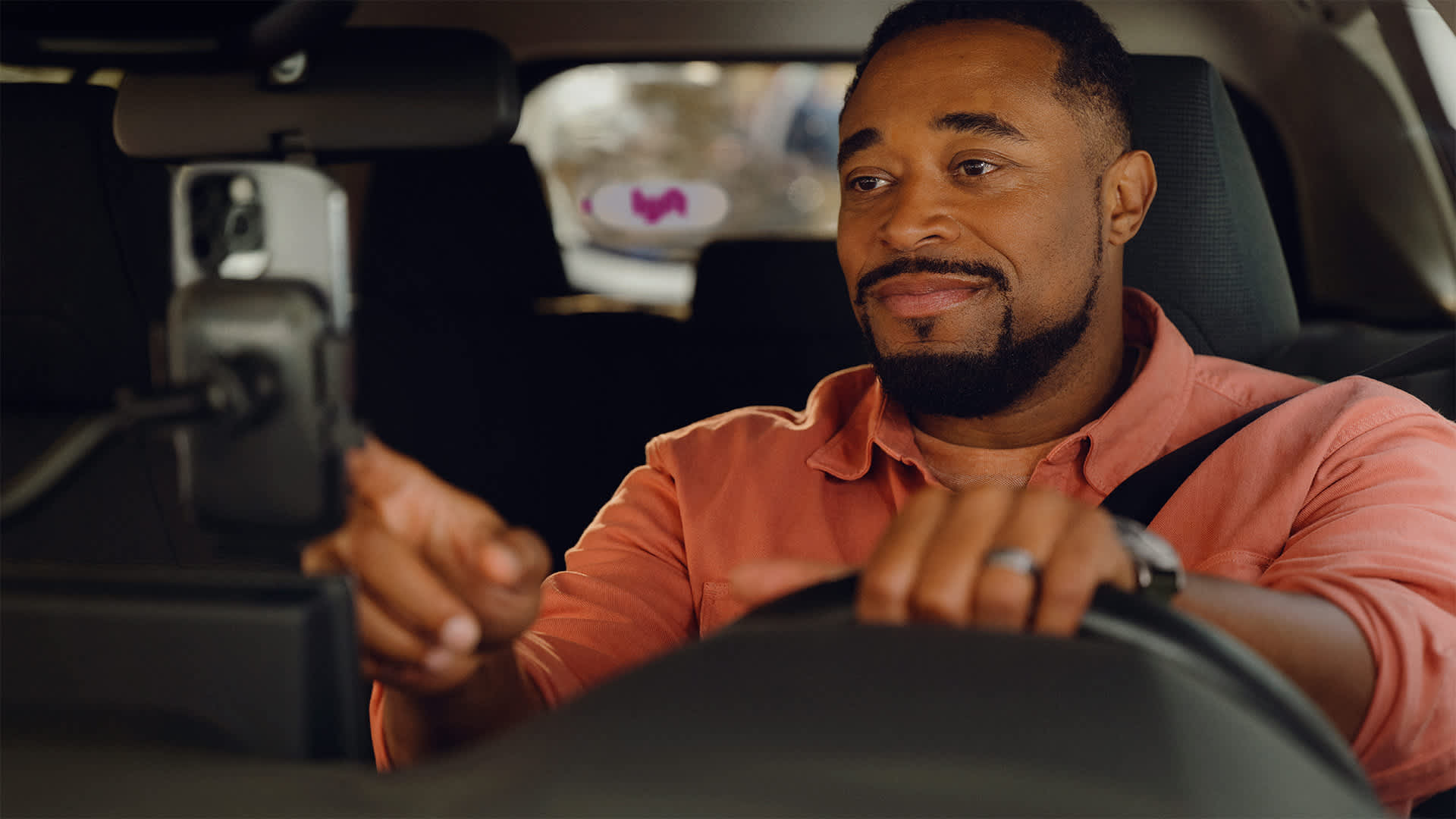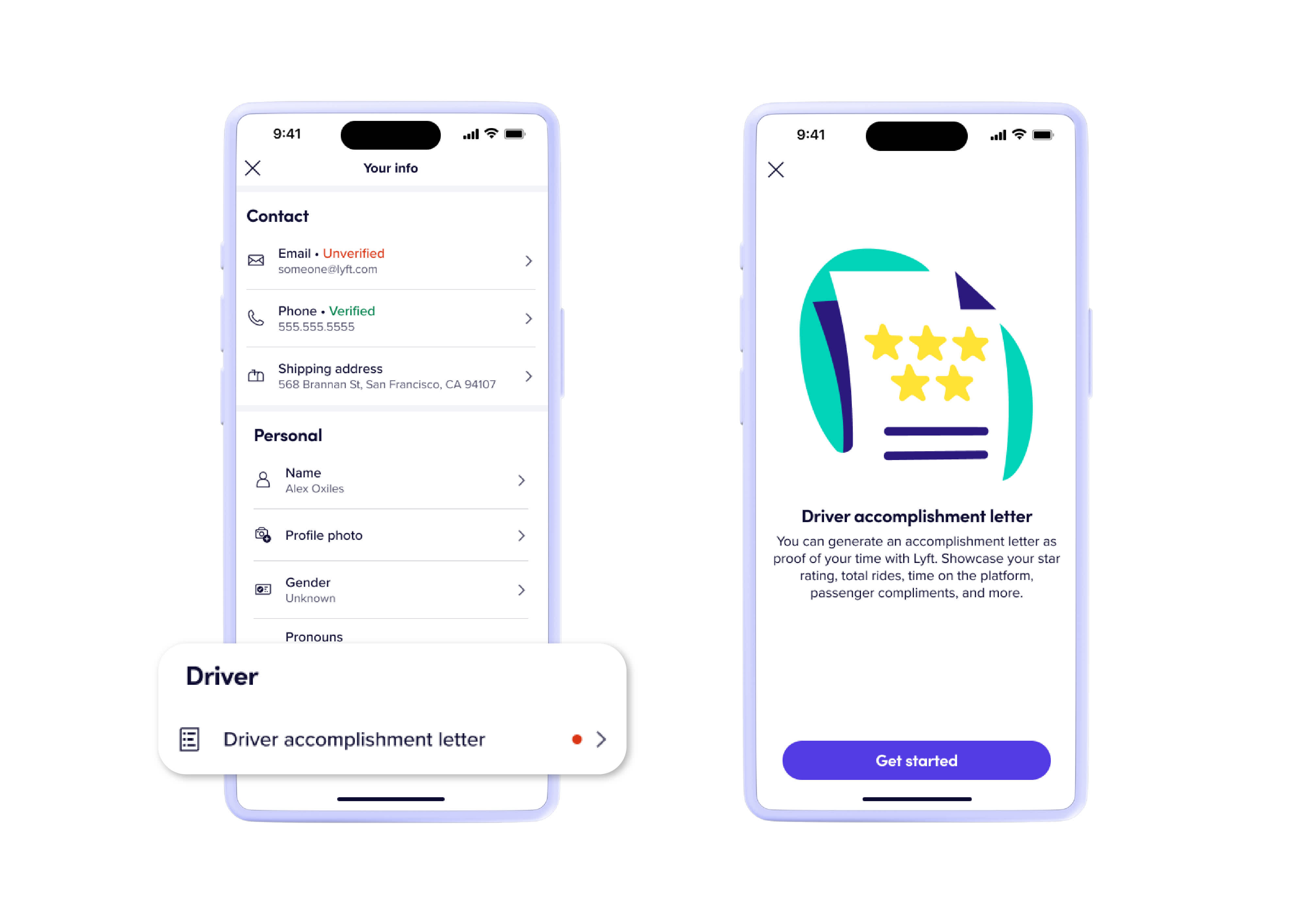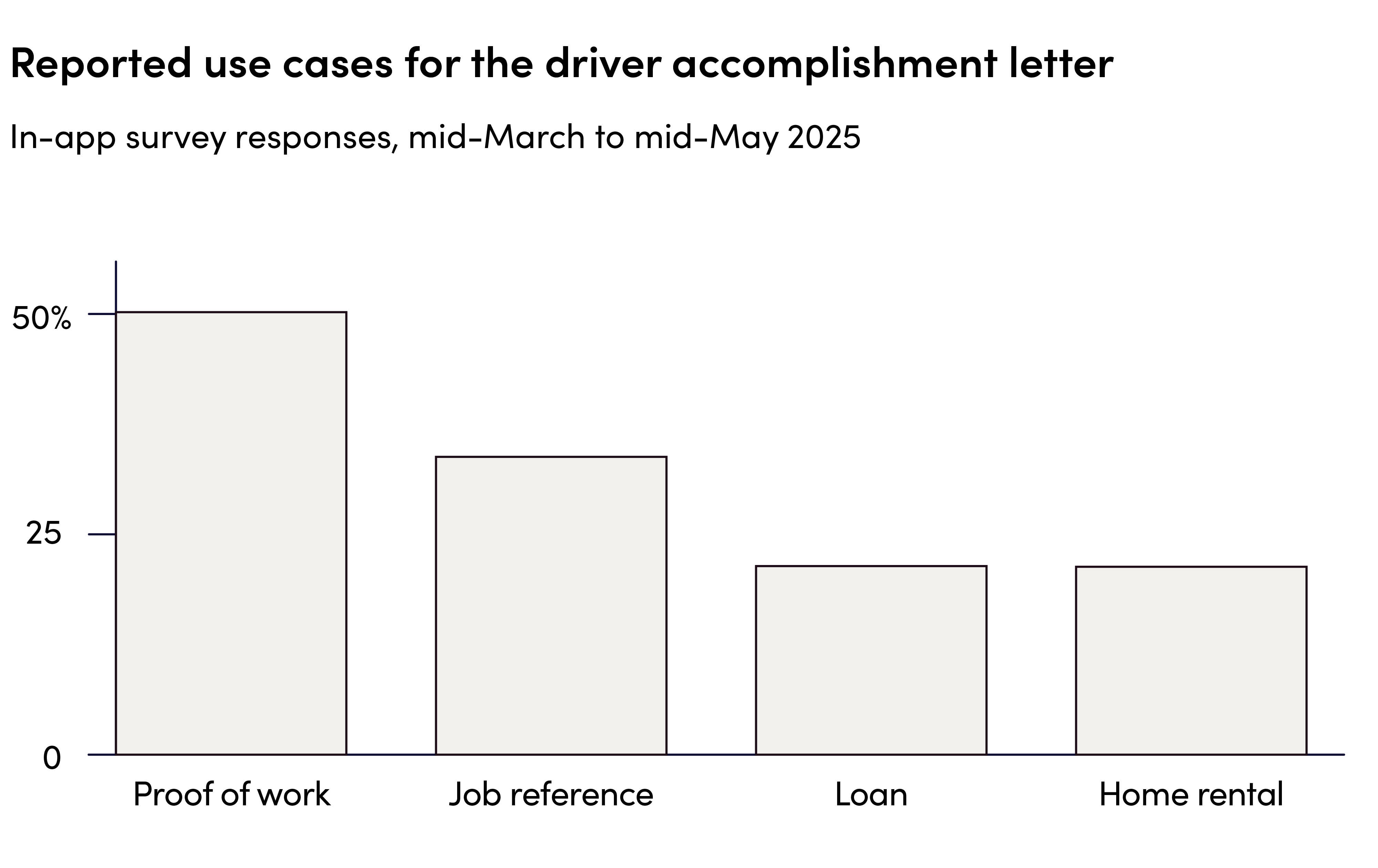
When asked what they like about driving with Lyft, drivers often cite the flexibility of “being their own boss.” They get to drive whenever they want, for however long they want, and they do not have to report up to anyone. But being your own boss comes with a minor drawback: There’s no manager to rave about you when you do an amazing job.
Until April 2025, that is. Last month, active Lyft drivers in good standing (i.e., 4.9+ star rating) logged on to find a new view on their app: the driver accomplishment letter. The letter provides a summary of a driver’s achievements, such as how many rides they’ve completed and how many hours they drive a week, as well as when they started driving, their current tier and rating, and an overview of passenger compliments.

The letter was first built in last year’s hackathon, after a request from Lyft’s CEO, David Risher. As a sometimes Lyft driver himself, Risher has a solid grasp on what might help drivers succeed. He also recognizes that some drivers are not driving with Lyft long-term, but as a stepping stone — having something to vouch for a driver’s time on the platform would help fill out their employment history.
Lyft knows that investing in drivers’ success both on and off the platform is the right thing to do — and a strong differentiator for business. And just two months into their existence, thousands of letters have been viewed and sent on by drivers. According to Senior Product Manager Lauren Chasanoff, “The accomplishment letter is a great way for drivers to help their résumé. They now have a way to show all the great work they did during a specific time period, along with all the skills they learned.”
“About 20% of drivers on the Lyft platform are between jobs, looking for part- or full-time employment. We could do so much to help them.”
David Risher
For Melissa Zahi, a driver in Columbus, Ohio, this matters a lot. “If you are in between jobs, Lyft will always be there,” Zahi explains. “But there is this idea that future employers won’t take it seriously.” After reading her driver accomplishment letter, Zahi started seeing things differently. “It shows how I am committed to this job seriously and that these skills are legitimate,” Zahi says. “I like to help people and interact with people. That’s customer service. So I can put it on my LinkedIn and feel like I’m being productive.”
In fact, the letter has already produced at least one success story. Sulakhen Sangha — who drives with Lyft part-time in Alberta, Canada — had been applying to part-time jobs for about three months but was not hearing back from anybody. But once Sangha received his accomplishment letter, he attached it to his applications as a cover letter. Barely a week after applying for a job in an IKEA warehouse, Sangha got an interview, and a week after that, a job offer. “When you work at IKEA, you face so many customers all the time,” Sangha explains. “[The recruiter] said that they saw from the letter that I am good with customers. That’s what I do with Lyft — deal with passengers for hours, right?”
Sangha is spot-on about that. And it’s something Chasanoff has had in mind for a while: “Drivers have amazing emotional intelligence and conversational skills. They know how to build relationships and read people. The letter is our way of elevating their work and pointing out how it’s transferable to other roles.” Indeed, 47% of drivers selected “proof of work” and 32% cited “job reference” as a reason for downloading the letter.

But that’s not the only use case. Twenty percent of drivers selected “home rental” and another 20% selected “loan” as a reason for downloading the accomplishment letter. In addition to the accomplishments listed, drivers also have an option to download an earnings statement, which calculates how much they’ve made in a given week, month, or year, broken down by ride earnings, bonuses, and tips. That kind of info can be essential when applying for a line of credit, where many banks require pay stubs with an application.
Greg Monroe, who drives in Greensboro, North Carolina, is going to use his earnings statement to apply for a line of credit to get a hybrid Hyundai Tucson. Since an accident in October, he’s been using his brother’s car to drive with Lyft. “It had 18,000 miles on it when I got it,” says Monroe. “But seven months of me driving it, and it’s got over 72,000 miles.”
According to Monroe, the Tucson he is planning to invest in has a sunroof — which riders love — and it gets better gas mileage than his brother’s car: “As much as I drive, that really makes a difference,” he says. Like Monroe, many drivers find themselves in a position where they need help financing a repair or a vehicle to continue earning with Lyft. The accomplishment letter — along with the earnings statement — is intended to help vouch for them.
Even if the loan doesn’t work out, Monroe appreciates the letter. He learned the value of positive reinforcement from a previous role running a smoothie chain. “Beyond the levels of accomplishment, the acknowledgment itself makes a difference,” he says. A similar sentiment is expressed by Zahi, who notes that the feedback is motivating. “It makes me want to do more — add trash cans, water bottles, chargers — provide an even better experience for the customer.”
Indeed, as Chasanoff says, “the accomplishment letter really serves two goals. One is the functional: Drivers can use it to achieve future goals, like getting a new job or applying for a loan or a home rental. And the other is recognition for all the amazing work that drivers have done.”

